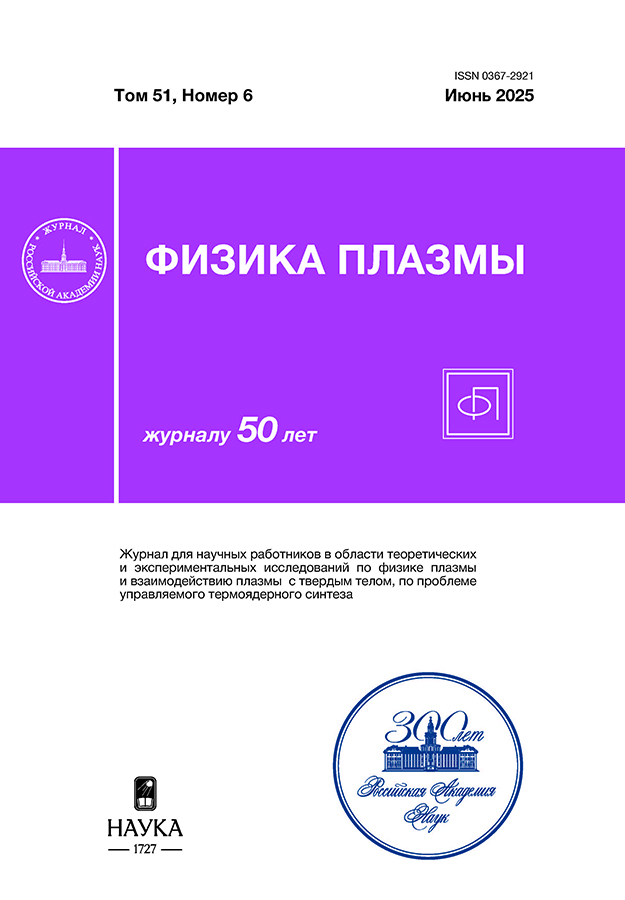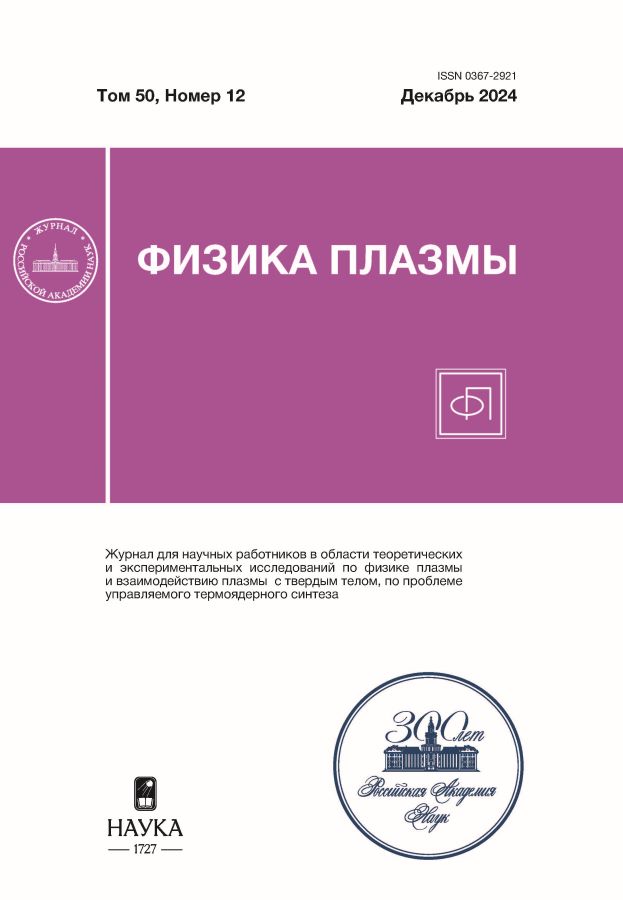Взаимодействие мощного потока водородной плазмы со сверхзвуковой газовой струей и вольфрамовой мишенью
- Авторы: Лиджигоряев С.Д.1,2, Бурмистров Д.А.1,3, Гаврилов В.В.1, Костюшин В.А.1, Позняк И.М.1,2, Пушина А.В.1,2, Топорков Д.А.1,2
-
Учреждения:
- Государственный научный центр РФ “Троицкий институт инновационных и термоядерных исследований”
- НИУ “Московский физико-технический институт”
- НИУ “Московский энергетический институт”
- Выпуск: Том 50, № 12 (2024)
- Страницы: 1527-1537
- Раздел: ДИАГНОСТИКА ПЛАЗМЫ
- URL: https://vestnik.nvsu.ru/0367-2921/article/view/683754
- DOI: https://doi.org/10.31857/S0367292124120106
- EDN: https://elibrary.ru/EEKQWK
- ID: 683754
Цитировать
Полный текст
Аннотация
Приведены результаты исследования взаимодействия мощного потока водородной плазмы со сверхзвуковой газовой струей перед вольфрамовой мишенью. Азот или неон, инжектированные перед поверхностью мишени, служат надежным способом защиты от прямого воздействия водородной плазмы на вольфрам. Экспериментально показано, что образующаяся плазма газовой струи является мощным источником коротковолнового линейчатого излучения. Плотность поглощаемой вольфрамовой мишенью энергии ≈ 25 Дж/см2 оказывается вдвое меньше энергии, поглощаемой вольфрамом при импульсном воздействии потока водородной плазмы без газовой струи ≈ 50 Дж/см2. Максимально достигаемая поверхностью вольфрама температура составляет ≈ 3700 К с применением газовой струи и ≈ 5800 К – без газовой струи. Наличие газовой струи-завесы перед вольфрамом приводит к локализации испаренного вольфрама вблизи мишени на расстояниях до 1 см от поверхности.
Полный текст
Об авторах
С. Д. Лиджигоряев
Государственный научный центр РФ “Троицкий институт инновационных и термоядерных исследований”; НИУ “Московский физико-технический институт”
Автор, ответственный за переписку.
Email: sandji@triniti.ru
Россия, Троицк, Москва; Москва
Д. А. Бурмистров
Государственный научный центр РФ “Троицкий институт инновационных и термоядерных исследований”; НИУ “Московский энергетический институт”
Email: sandji@triniti.ru
Россия, Троицк, Москва; Москва
В. В. Гаврилов
Государственный научный центр РФ “Троицкий институт инновационных и термоядерных исследований”
Email: vvgavril@triniti.ru
Россия, Троицк, Москва
В. А. Костюшин
Государственный научный центр РФ “Троицкий институт инновационных и термоядерных исследований”
Email: sandji@triniti.ru
Россия, Троицк, Москва
И. М. Позняк
Государственный научный центр РФ “Троицкий институт инновационных и термоядерных исследований”; НИУ “Московский физико-технический институт”
Email: sandji@triniti.ru
Россия, Троицк, Москва; Москва
А. В. Пушина
Государственный научный центр РФ “Троицкий институт инновационных и термоядерных исследований”; НИУ “Московский физико-технический институт”
Email: sandji@triniti.ru
Россия, Троицк, Москва; Москва
Д. А. Топорков
Государственный научный центр РФ “Троицкий институт инновационных и термоядерных исследований”; НИУ “Московский физико-технический институт”
Email: toporkov@triniti.ru
Россия, Троицк, Москва; Москва
Список литературы
- Toporkov D.A., Burmistrov D.A., Gavrilov V.V., Zhitlukhin A.M., Kostyushin V.A., Lidzhigoryaev S.D., Pushina A.V., Pikuz S. A., Ryazantsev S.N., Skobelev I.Yu. // Plasma Phys. Rep. 2023. V. 49. P. 1000.
- Skovorodin D.I., Pshenov A.A., Arakcheev A.S., Eksaeva E.A., Marenkov E.D., Krasheninnikov S.I. // Phys. Plasmas. 2016. V. 23. P. 022501.
- Kostyushin V.A., Poznyak I.M., Toporkov D.A., Burmistrov D.A., Zhuravlev K.V., Lidzhigoryaev S. D., Usmanov R.R., Tsybenko V. Yu., Nemchinov V.S. // Instruments Experimental Techniques. 2023. V. 66. P. 920.
- Житлухин А.М., Илюшин И.В., Сафронов В.М., Скворцов Ю.В. // Физика плазмы. 1982. Т. 8. С. 509.
- Лиджигоряев С.Д., Бурмистров Д.А., Гаврилов В.В., Костюшин В.А., Позняк И.М., Пушина А.В., Топорков Д.А. // ВАНТ. Сер. Термоядерный синтез. 2023. Т. 46. С. 63.
- Архипов Н.И., Васенин С.Г., Житлухин А.М., Половцев Н.А., Сафронов В.М., Топорков Д.А. // Приборы и техника эксперимента. 1998. № 1. С. 128.
- Волков Г.С., Лахтюшко Н.И., Терентьев О.В. // Приборы и техника эксперимента. 2010. № 5. С. 115.
- Prism Computational Sciences. Software tools for scientific research and commercial applications in the physical sciences and engineering. http://www.prism-cs.com
- Mutzke A., Bandelow G., Schneider R. // J. Nuclear Materials. 2015. V. 467. P. 413.
- Mikhailov V.S., Babenko P.Yu., Shergin A.P., Zinoviev A.N. // Plasma Phys. Rep. 2024. V. 50. P. 23.
Дополнительные файлы
























